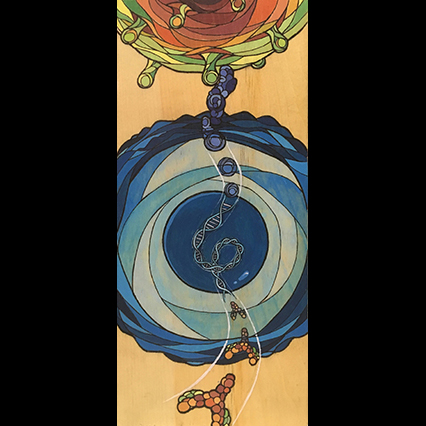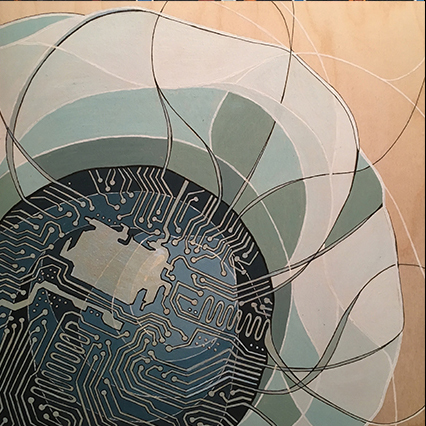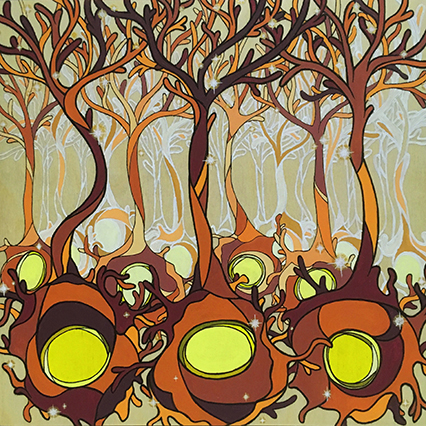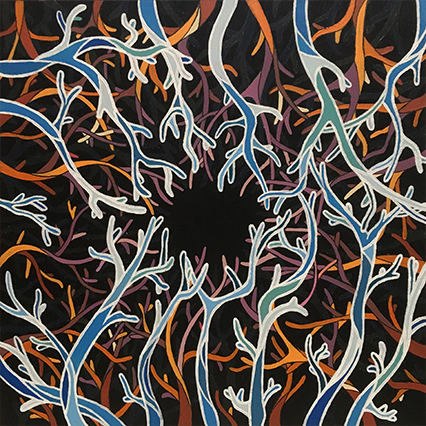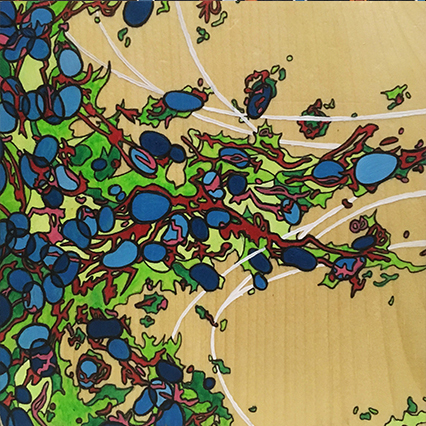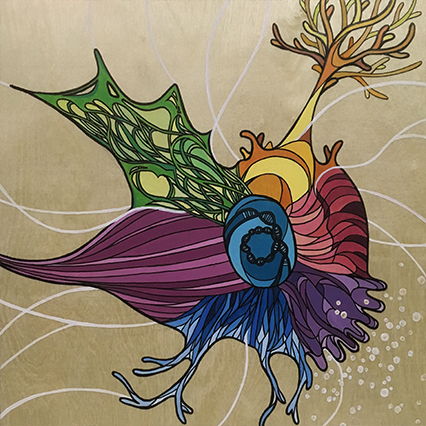
“Anyone who views something under a microscope or through a telescope will tell you that science is art, and that art is the perfect way to convey science,” said Amanda Kwieraga, an alumna of USC’s master of science in stem cell biology and regenerative medicine program. Using acrylic and ink on wood panels, Kwieraga is creating “Art for Science’s Sake,” a series of paintings to convey concepts related to stem cell biology and regenerative medicine.
Kwieraga has always been a chimera: part scientist, part artist. In 2015, she earned dual bachelor’s degrees in biology and studio art from the University of Richmond. While at USC, she worked in the laboratory of Matthew Michael, associate professor of biological sciences, studying the development of sperm and eggs in the worm C. elegans. She also began writing a science fiction novel, sold acrylic paintings and other artwork on Etsy, and embarked on “Art for Science’s Sake.” As a newly minted USC graduate, she was recently hired as a research assistant at BioLegend, a biomedical company in San Diego.
“Science is more than fat textbooks, complicated papers, and white-haired men in lab coats,” said Kwieraga. “Science is beautiful. Science is art.”


